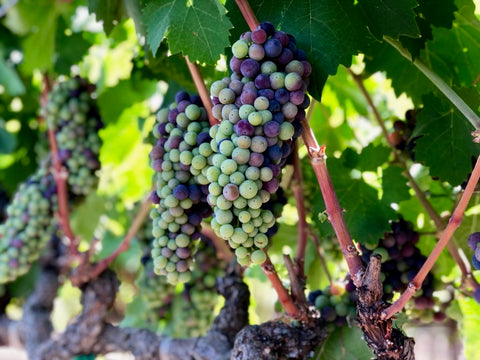
The Life Cycle Of The Vine
Jan 17, 2022
0 comments
By examining the biological cycle of the vine we will discover that, like all plants, it has its own life cycle or the period that goes from its birth to death.

Since plants generated from seeds have a rather long period of unproductivity, we will talk about the life cycle of grafted vine plants or, also called, originated by cuttings. Depending on the type of crop adopted, the period of non-productivity varies from 1 to 3 years; it is indicatively after the third in fact, that the vine begins to produce its first fruits, giving way to the phase of productivity.

From there, the period of productivity begins to grow, and once it reaches its maximum productive maturity, the volume produced becomes constant; this occurs for a period of between twenty / twenty-five years. Subsequently, around thirty / forty years of life of the vine, an aging phase of the plant begins from which excellent wines can be born, but certainly the quantities produced are much lower.
In addition to the life cycle we find the annual cycle. It concerns the vines in the production phase and the duration varies according to the cultivation practices, the ecosystem conditions and the genetic characteristics of the vine. The annual cycle is in turn divided into periods that are called "phenological phases" which include: on the one hand the vegetative activity of the vine (vegetative sub-cycle) and on the other, the reproductive activity (reproductive sub-cycle).
The vegetative sub-cycle begins with the so-called "weeping", a typical manifestation of the vine during the pruning phase and which consists in the emission of liquid at the level of the cuts. The "crying" derives from the reactivation of sugar metabolism and the consequent reactivation of cellular respiration, accompanied by a high level of absorption by the roots.

It then continues with the budding of the buds and the consequent growth of the shoots which ends in August, with the period of "agostamento" or maturation of the shoots, during which the shoots undergo lignification and with this the green color disappears and is formed the bark.
This phase is essential because a good lignification allows the plant to better survive the winter and therefore affects its life cycle and the next year's production. With the arrival of low temperatures, leaf fall (defoliation) begins and the vine begins its rest period.
The reproductive sub-cycle of the vine affects the fruiting shoots and occurs simultaneously with the vegetative sub-cycle.
The first phase is flowering, which depending on the climatic conditions can last from a week to fifteen days, occurs between the end of May and the beginning of June and consists of the appearance and complete development of the flowers and corresponds to the detachment of the corolla from the floral receptacle.

The fruit setting follows, the flowers that complete the fertilization and give rise to a berry are in fact called "attachments", hence this phase takes its name. After fertilization, the berries begin their growth and take on color giving rise to the phase called veraison.

Between August and October, depending on the environmental conditions and the variety of the vine, the grape reaches maturity and based on the use of the grape, the optimal period for the harvest will be established.






 Include a free greeting card by writing your message in the dedicated field at Checkout
Include a free greeting card by writing your message in the dedicated field at Checkout





